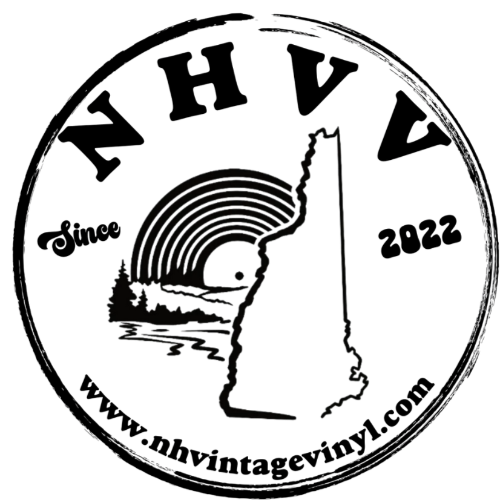The Last Waltz: A Roots Rock Thanksgiving Tradition by Ryan Cameron
Share

Let’s start at the end. The Band enters the stage after over five hours of playing, and those five hours are evident as the members mosey back onto the stage. “You’re still here, huh?” queries a weary Robbie Robertson. There is a glazed intoxication in his wonderment at the love and goodwill pouring from the audience through the long night. The Band stretches and slides right into “Don’t Do It.” What is so striking and radical about starting at the last song is seeing The Band exhausted, elated, and riding on the fumes of a night of pure euphoria—and still able to switch on and deliver a performance just as thrilling and vital as any point earlier in the night. This is the moment the rest of the film works to document.
The Band had been working as a unit and touring for 16 years. What makes The Band so extraordinary and sustains their legacy through the years is the fact that they were more of a commune than a traditional band. Who's the true leader of The Band? Is it Robertson? Robertson and director Martin Scorsese spend the first forty minutes of the film making this argument through behind-the-scenes interviews. Here, Robertson waxes poetic about the wilderness endured by touring musicians, explaining that this final performance was inevitable. The wise thing to do, he implies, was to throw one last party—to go out on top before the burnout and hangover truly hit.
I would argue, however, that what makes The Band so special is that they operate not as a hierarchical unit with a central genius directing everything, but rather as a commune, where each member stands shoulder to shoulder to elevate the music to new heights. The hippie dream of the '60s realized. This becomes clear when Levon Helm steps into the spotlight with the performance of “The Night They Drove Old Dixie Down.” For my money, this is The Band's best performance in the film. It also marks the beginning of other members stepping into the spotlight behind the scenes, adding their perspectives on what this is and why it matters.
At the start of the film, Rick Danko wishes everyone a Happy Thanksgiving. Holding The Last Waltz on this holiday aligns with the obsession The Band's Canadian members had with America and its traditions. Their entire catalog is full of narratives spun from Americana myths and legends. Hosting their final performance on Thanksgiving recognizes the American tradition of togetherness, of coming together as a family to create a ceremony of gratitude and recognition for what has come before. The '60s were long over, and the '70s were also entering their twilight. The Band saw the writing on the wall and gathered their contemporaries to celebrate and mourn this passage.
It truly is a “who’s who” gathering of the previous decade’s rock and roll icons. Ronnie Hawkins, as the symbolic and sentimental first guest, represents The Band's earlier iteration. Dr. John delivers “Such a Night,” punctuated by a piano solo that stands as a musical highlight of the guest performances. Neil Young infamously takes the stage with a dopey grin, intoxicated both by drugs and by the sheer wonder of playing with The Band. The rendition of “Helpless” is elevated by Joni Mitchell’s surprise backing vocals, the camera catching her backstage in the shadows of the stage lighting. Her haunting harmonies add a weightlessness to the song's final chorus.
When Joni takes the stage, it showcases The Band's versatility as they launch into a kinetic version of her song “Coyote” from Hejira, a career highlight. The jazz fusion style of the track challenged The Band, pushing them beyond the rock and roots-country framework they had established. Following Mitchell is Neil Diamond, perhaps the most controversial guest of the night. Yet The Band’s skill as gracious hosts and masterful musicians elevates Diamond’s performance of “Dry Your Eyes,” co-written with Robertson.
Muddy Waters brings out The Band’s blues side with a searing rendition of “Mannish Boy,” while Eric Clapton represents their fondness for British blues rock. A standout moment occurs when Clapton’s guitar strap snaps mid-solo, and Robertson seamlessly picks up without missing a beat, continuing the solo where Clapton left off—a testament to his professionalism and mastery.
Van Morrison electrifies the halfway point with a stomping performance of “Caravan.” Having returned to music after a mid-'70s career slump, Morrison delivers a passionate rendition that captures the moment where a genius rediscovers his love for his craft. You can see The Band members awestruck as Morrison belts out the refrain, “Turn it up… RADIO!” Emmylou Harris leads The Band through “Evangeline,” a segment recorded separately from the rest of the concert. Along with the coda, “Theme from The Last Waltz,” this serves as a dreamlike interlude. The absence of an audience in these scenes is subtle but poignant, with the airy acoustics leaving an indelible impression.
As The Last Waltz enters its final act, the climax comes with Bob Dylan’s arrival. Dylan, an essential force in The Band’s identity, straddles the roles of leader and equal collaborator. Together, they perform “Forever Young” from their collaborative album Planet Waves—a sentimental gesture given the deep catalog they could have chosen from. The Dylan set concludes with “I Shall Be Released,” where every guest returns to exuberantly sing its iconic chorus.
The Last Waltz was meant to stand as the ultimate testament to The Band. While it marked the end of their touring career, it also remains a trailblazing documentary, showcasing Scorsese’s ability to merge high-end cinematography with the raw spirit of roots rock and roll. Make this a Thanksgiving tradition. Be grateful for The Band and the community of music they championed.
Ryan Cameron
